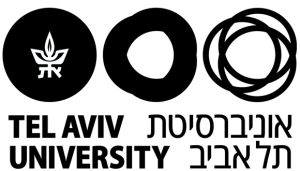Dalit Rom-Shiloni is a Professor of Hebrew Bible at Tel Aviv University. She writes extensively on Hebrew Bible theology; group-identity conflicts within the Judean communities of the Neo-Babylonian and the early Persian period; inner-biblical allusion and interpretation mainly in Jeremiah and Ezekiel; the formation of sixth-century BCE prophetic and poetic literatures; and on nature imagery and conceptions of nature in the Hebrew Bible. Rom-Shiloni is the Founding Director of the Orit Guardians MA and research program, dedicated to the study and research of the Ethiopic Bible Scriptures of Beta Israel. She serves as General Editor of the journal Beit Mikra; and is a member of the SBL Council.
Rom-Shiloni is the author of: God in Times of Destruction and Exiles: Tanakh (Hebrew Bible) Theology (Jerusalem: Magnes, 2009), in Hebrew; Exclusive Inclusivity: Identity Conflicts between the Exiles and the People who Remained (6th–5th Centuries BCE) (LHBOTS, 543; New York: Bloomsbury, 2013); a short commentary on “Jeremiah,” in The Jewish Study Bible, 2nd ed. (ed. Adele Berlin and Marc Brettler; Oxford: Oxford University Press, 2014), 901–1032; and Voices from the Ruins: Theodicy and the Fall of Jerusalem in the Hebrew Bible (Grand Rapids, MI: Eerdmans, 2021).
The DNI project introduces Rom-Shiloni’s interest in landscape and ecology in literature of the Hebrew Bible, with special attention to the role of imagery and metaphor in prophetic and poetic literature, as also to the search of implicit HB conceptions of nature. The DNI Bible project gained twice the support of the Israel Science Foundation for the years 2015–2019 (ISF 462/15) and 2019–2022 (ISF 1884/19). Rom-Shiloni currently leads the project, serves as General Editor of the DNI Bible Supplements series with Bloomsbury T & T Clark, as she also gradually co-writes a book entitled “Even the Sparrow Has Found a Home” (Ps 84:4): Birds in the Hebrew Bible in cooperation with the ornithologist, Dr. Haim Moyal.
A personal note:
The significance of the DNI project further extends the strict academic borders for me, and here I allow myself to present a more personal note. I was first introduced to Hebrew Bible studies and Ancient Semitic Languages as a twenty-one-year-old, when I started to work under Nogah Har’uveni at Neot Kedumim. These were the formative years that determined the fields I chose to study at the Hebrew University of Jerusalem, in both my BA and MA (Hebrew Bible and Ancient Semitic Languages). Throughout my studies until Nogah passed away in 2007, I was in close contact with him and with Neot Kedumim. I feel privileged and even more so obligated to conduct this research under very clear and advanced scholarly standards, ones Nogah Har’uveni never wanted to embrace. While the project will not give priority to Har’uveni’s suggestions, they will be clearly presented and critically evaluated along with other perspectives on nomenclature and much beyond. The lack of attention among biblical scholars in Israel and globally to aspects of nature in their scholarly work is a loss I have felt throughout my academic career and still feel. The DNI project is designed to make a significant change to this situation.

